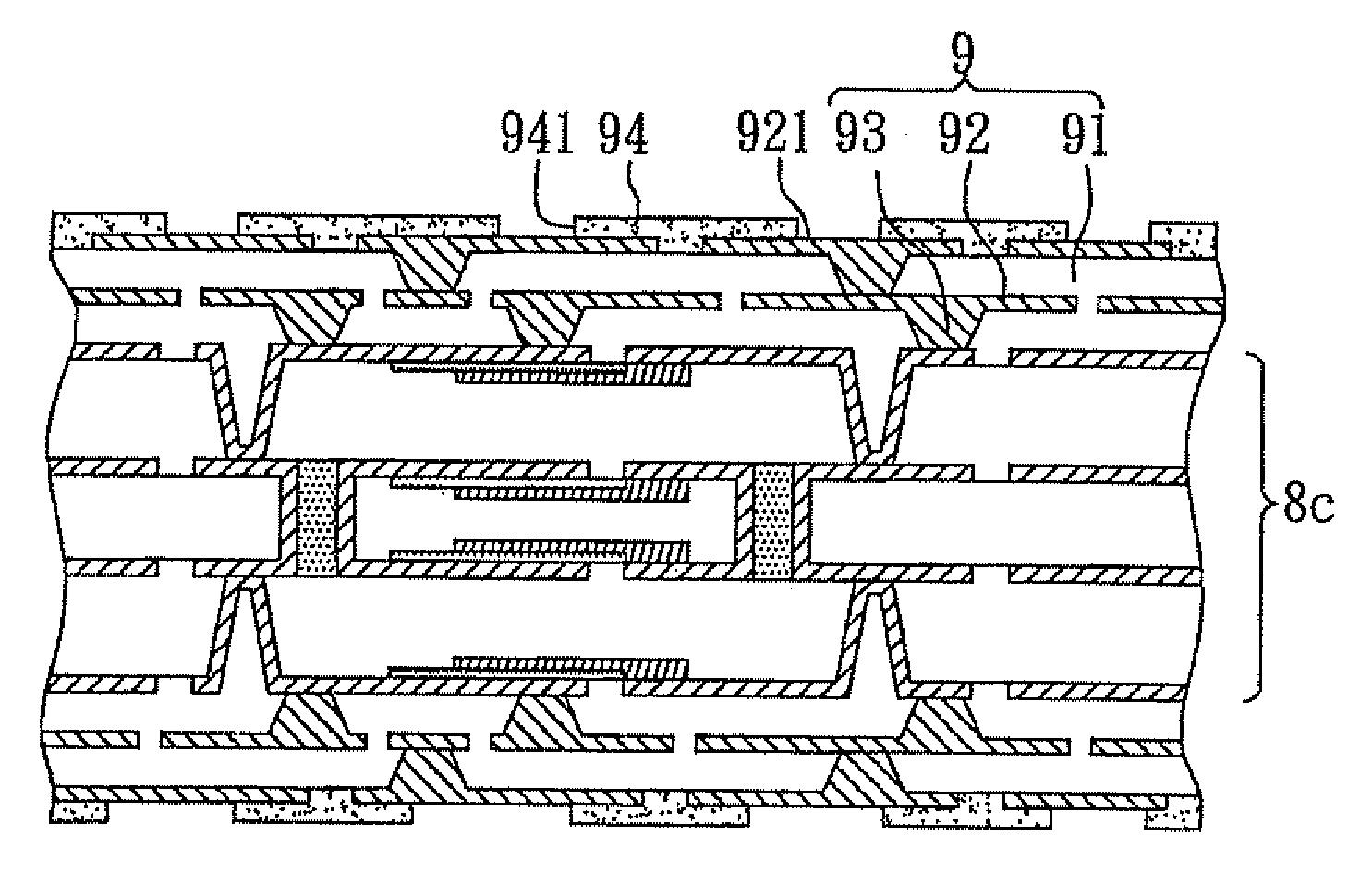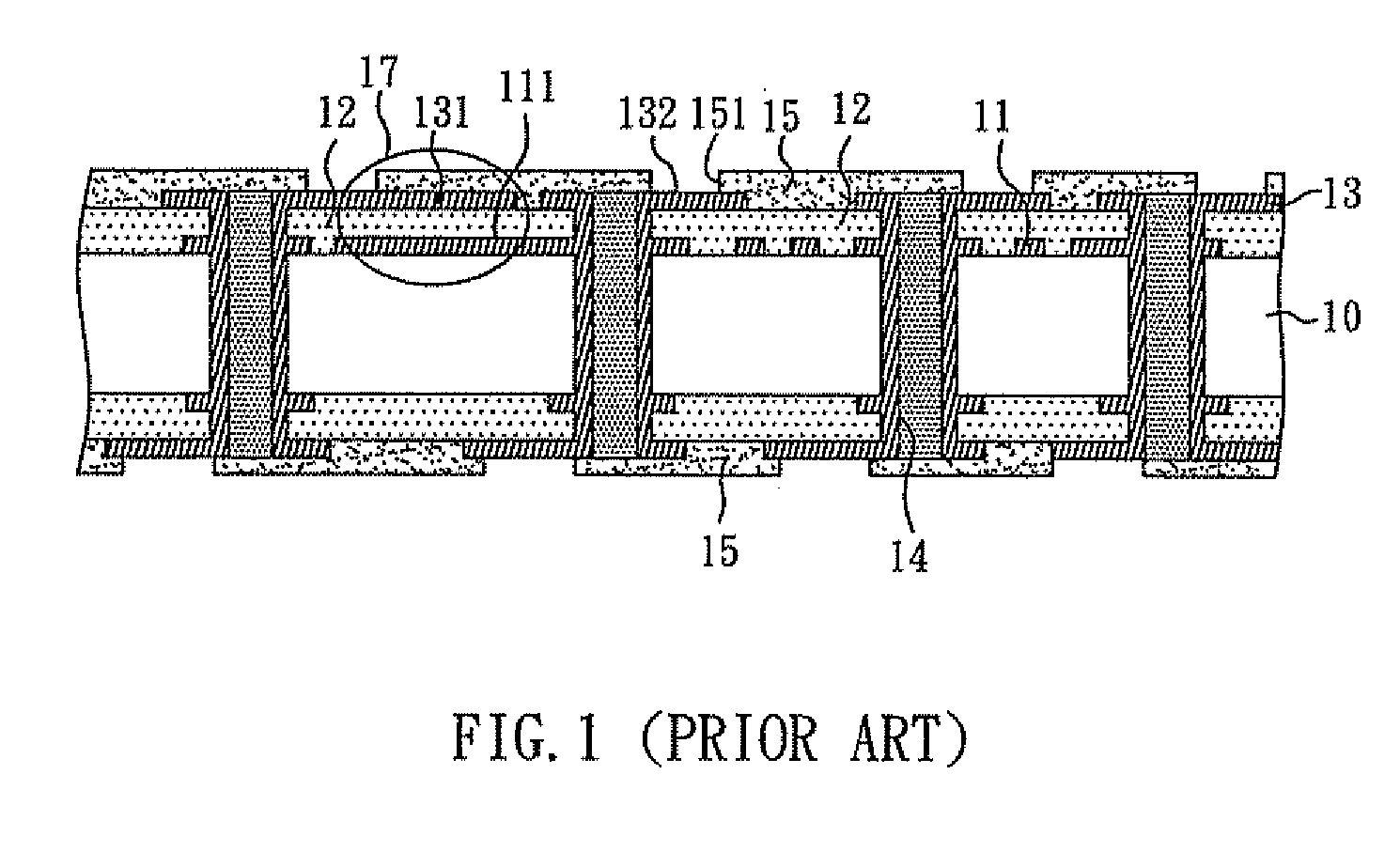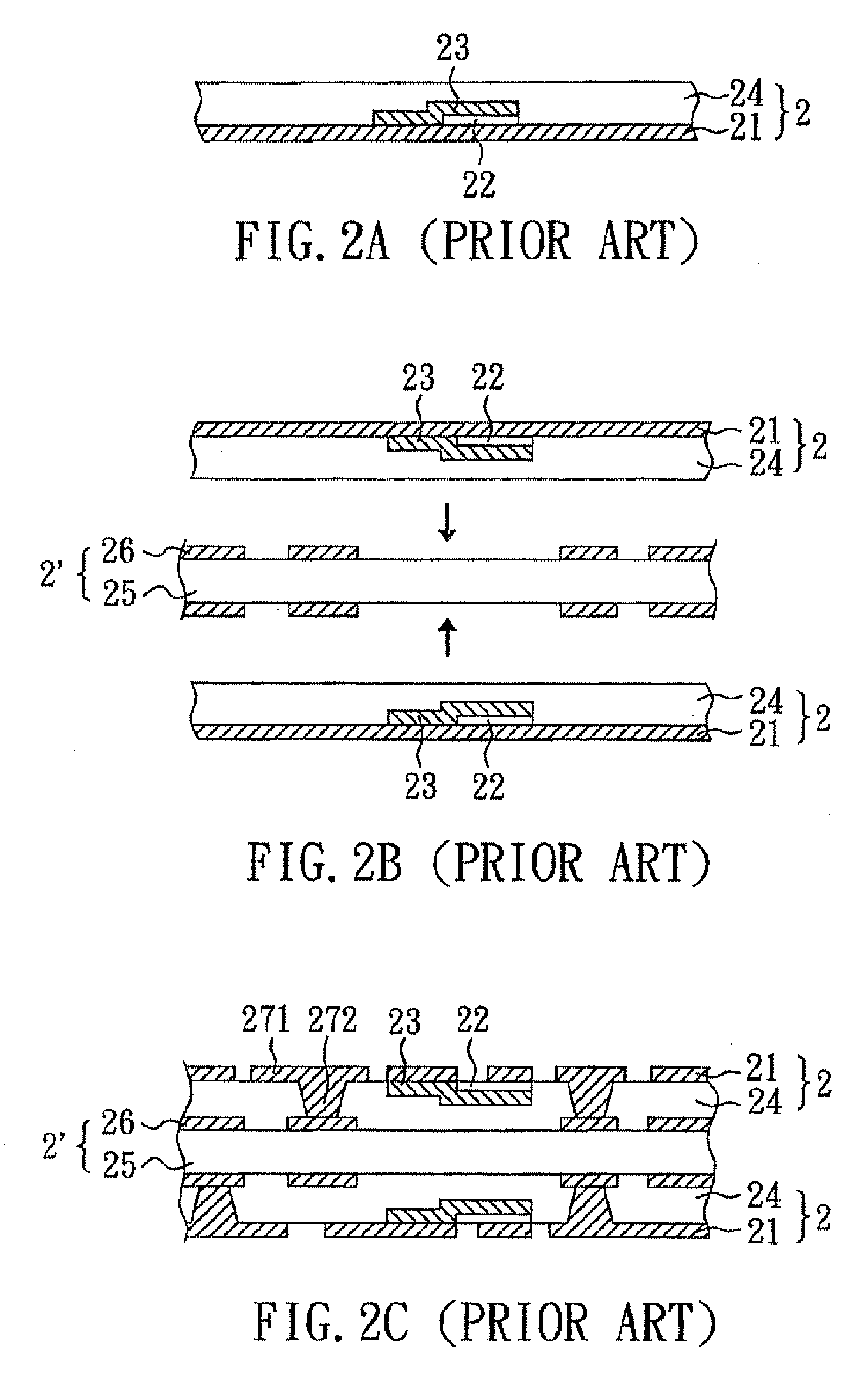Circuit board structure with capacitors embedded therein and method for fabricating the same
a capacitor and circuit board technology, applied in the field of circuit board structure with capacitors embedded therein, can solve the problems of reduced flexibility of wiring layout on the surface, unfavorable shrinkage of package size, and increased noise, and achieve the effect of more capacitan
- Summary
- Abstract
- Description
- Claims
- Application Information
AI Technical Summary
Benefits of technology
Problems solved by technology
Method used
Image
Examples
embodiment 1
Method Embodiment 1
[0029]With reference to FIGS. 3A to 3D, there are shown cross-section views of a process for fabricating a circuit board structure with capacitors embedded therein. As shown in FIG. 3A, at least two core layers 3,3 are provided. In the present embodiment, three core layers 3, 3′, and 3 are provided, and the core layers 3, 3′ and 3 individually comprise a dielectric layer 31. The material of the dielectric layer 31 can be selected from the group consisting of a non-photosensitive organic resin, a photosensitive organic resin (e.g. ABF (Ajinomoto Build-up Film), BCB (Benzocyclo-buthene), LCP (Liquid Crystal Polymer), PI (Poly-imide), PPE (Poly(phenylene ether)), PTFE (Poly (tetra-fluoroethylene)), FR4, FR5, BT (Bismaleimide Triazine), or Aramide), and a mixture of epoxy resin and fiber glass. In the present embodiment, the material of the dielectric layer 31 is ABF. The dielectric layer 31 has two opposite surfaces, and the outsides of the two opposite surfaces indi...
embodiment 2
Method Embodiment 2
[0035]With reference to FIGS. 4A to 4F, there are shown cross-section views of another process for fabricating a circuit board structure with capacitors embedded therein. As shown in FIG. 4A, a first core layer 5 is provided. The first core layer 5 comprises a dielectric layer 51 having two opposite surfaces, first metal layers 52 disposed on the outsides of the two opposite surfaces of the dielectric layer, and at least two capacitors 53 embedded respectively on the insides of the two opposite surfaces of the dielectric layer 51 and individually electrically connecting with the first metal layer 52 at the same side.
[0036]Subsequently, as shown in FIG. 4B, a second core layer 6 and a third core layer 7 are provided. The second core layer 6 and the third core layer 7 individually comprise a dielectric layer 61,71; a first metal layer 62,72 disposed on one surface of the dielectric layer 61,71; and at least one capacitor 61,71 embedded on the inside of the surface w...
embodiment 3
Method Embodiment 3
[0042]The present embodiment is the same as Method Embodiment 2, except the process for fabricating the components electrically connecting the circuit layers 521, 621 and 721. Please refer to FIG. 5A. In the present embodiment, a second conductive through hole 54 is formed in the first core layer 5, and the second conductive through hole 54 electrically connects the circuit layers 521 on the two sides of the first core layer 5. After the first core layer 5 is laminated between the second core layer 6 and the third core layer 7, a plurality of vias 610 and 710 are formed in the second core layer 6 and the third core layer 7, respectively. Then, the first metal layers of the second core layer 6 and the third core layer 7 are patterned to form circuit layers 621 and 721, respectively, and conductive vias 622 and 722 are simultaneously formed in the vias 610 and 710, respectively. Other steps are the same as those described in Method Embodiment 2. The conductive vias ...
PUM
 Login to View More
Login to View More Abstract
Description
Claims
Application Information
 Login to View More
Login to View More - R&D
- Intellectual Property
- Life Sciences
- Materials
- Tech Scout
- Unparalleled Data Quality
- Higher Quality Content
- 60% Fewer Hallucinations
Browse by: Latest US Patents, China's latest patents, Technical Efficacy Thesaurus, Application Domain, Technology Topic, Popular Technical Reports.
© 2025 PatSnap. All rights reserved.Legal|Privacy policy|Modern Slavery Act Transparency Statement|Sitemap|About US| Contact US: help@patsnap.com



